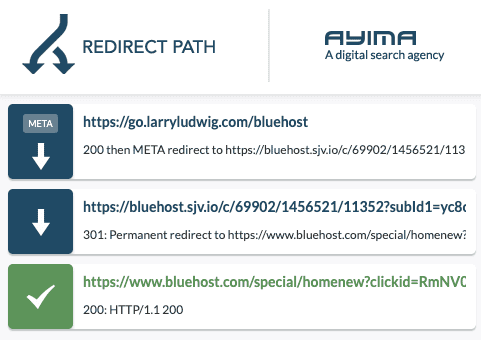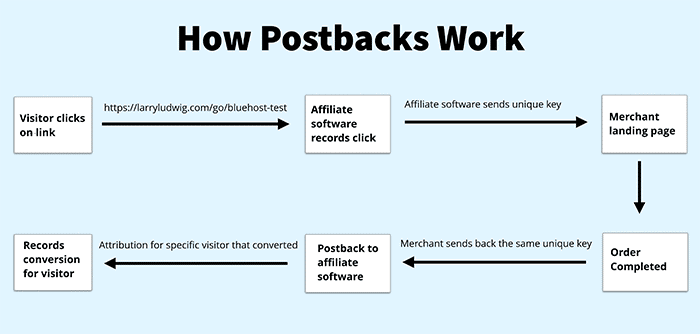Link Cloaking – What Is It, And How To Do It?
If you’re just starting with affiliate marketing, you probably heard the term “link cloaking.” It sounds like something out of a James Bond movie. But this isn’t some cloak-and-dagger spy thriller.
If you’re not cloaking your links, you’re not serious about affiliate marketing. You’re missing out on the huge advantages of link cloaking and should start immediately. Want to find out why? Keep reading…
What Is Link Cloaking?
First off, let’s define what “link cloaking” means.
Quite simply, link cloaking is masking a link to hide the destination website’s URL. When a site visitor clicks the cloaked link, it redirects to the intended destination.
The reasons to cloak affiliate links:
- You want short and memorable URLs
- To make the links easier to share
- To better manage the links
- To prevent other affiliates from stealing affiliate attribution
- You want to track clicks and conversions.
Link Shortening vs. Link Cloaking
Link shortening is similar to link cloaking. Both mask the destination link, but with link shortening, you are explicitly shortening the link so it can fit into some size limitation like social media.
Link cloaking’s purpose is to mask the destination and create a memorable and brandable link.
Short Affiliate Links
The function of affiliate links is to track the traffic that your website sends to a merchant. They usually consist of codes that identify key information about the program.
Typically, affiliate links look like a convoluted mess. Even most affiliate marketing people would describe an affiliate link as a long URL with nonsensical information. If a professional thinks it ‘s confusing, what does someone without a technical background think when they look at the link?
You want commerce to be as frictionless as possible. Trust is a critical factor in e-commerce. Trust applies not only to you and your website but also to the destination links you place within your website. You don’t want to instill any doubt in a reader before they click on an affiliate link.
This is especially important when it comes to affiliate marketing.
By presenting a clean, understandable affiliate link, you’ll inspire trust in your visitors and make them more likely to click.
Now, I’m not suggesting that you should cloak the link to fake out the visitor. If anything, it’s quite the opposite.
Here’s an example from my own website. This is an affiliate link for the hosting provider Bluehost. Which of these URLs looks better and more trustworthy to you?
https://bluehost.sjv.io/JrMdor
OR
https://go.larryludwig.com/bluehost
As you can see, using the Google Chrome plugin Redirect Path, shows the destination is the same as the other link.

Easier to Share
Because the cloaked links are cleaner, they’re easier to share.
I’m constantly asked about the various services I use. Instead of having to look each one up individually and cut and paste a long string of code, I can tell you offhand what the link would be.
All of my cloaked affiliate links look like this:
https://go.larryludwig.com/[merchantname]
Using a system like this makes it very easy to give out impromptu affiliate links. In turn, this yields more revenue from the merchants I have relationships with.
Affiliate Link Management
Managing affiliate links can be a pain. Not only can they be found on your website, but you should also include them in emails and social media posts. To make the links easier to manage – and to also have the ability to use the same links across different media — it makes sense to manage them in one central location.
This is where an affiliate link management service comes into play.
Affiliate link-cloaking software comes in two forms:
- WordPress plugins
- Software as a service (SaaS)
WordPress plugins tend to be easier to use since they are part of WordPress. However, they offer less functionality.
The affiliate link management SaaS products have much more functionality for a “super affiliate,” but they’re more complex to implement.
Using either form streamlines link management. If the merchant changes the offer, you have to change it in only one place. If the merchant changes affiliate networks (a common occurrence), again, you have only one link to change.
You can reuse the same merchant link for all of your campaigns. The only reason to use a different link is for a different offer.
I’m very anal about managing affiliate links, and you should be too! After all, they’re the lifeblood of any affiliate-based business.
Nothing is worse than clicking on an affiliate link that’s no longer valid. It leads to a poor user experience. Using a direct link supplied by the merchant leads to a lot of work anytime you are required to update a link. That’s why it’s critical you use a link management system.
Click Tracking and Conversion Tracking
This is the most critical, but often overlooked reason to cloak your affiliate links.
A good link tracking tool should at least track clicks. You should be able to generate a report telling you merchant XYZ saw 14 clicks last month. A common one used by many WordPress users is Pretty Links.
Summary
| Platform | WordPress |
|---|---|
| Conversion Tracking | No |
| Price | FREE - $199.50 per year |
Pretty Links is nice, but it can only manage and track clicks. The name of the game in affiliate marketing is tracking conversions.
Why do you want to do this?
If you want to become a “super affiliate,” you must track conversions.
Most affiliates are happy with a monthly report that states only how many conversions you’ve seen in a month.
I’ve always wanted more than that, and you should too!
You can report not only the number of conversions but the source of each conversion, as well. Which web pages are generating the most conversions?
Most affiliate marketers rely on SEO for website traffic. This is fine if you’re building an audience only via organic search. After all, you aren’t paying for it. Tracking isn’t as critical with search.
You can track not only which web pages convert better, but which traffic sources. You can answer questions such as: Which had a better conversion rate email: your web post or paid ads?
One such service that can track clicks and conversions is LinkClicky.
Summary
| Platform | Cloud, Linux |
|---|---|
| Conversion Tracking | Yes |
| Price | $199 - $399 per month |
| Annual Discount | Yes - 10% discount |
How to Track Affiliate Conversions
You have four options when it comes to affiliate conversion tracking:
- Postbacks
- Tracking pixel
- API
- CSV File Export
Postbacks
Postbacks are the oldest and most popular method for tracking affiliate conversions.
You might see these tracking options also referred to as “trackbacks,” “webhooks,” or “server-to-server conversions.” In our discussion, I’ll just refer to them as “postbacks.”
A postback communicates an affiliate event via two servers using the HTTP protocol. One server is the sender of the postback, while the other is the receiver. This is the very same protocol used to send webpages you see on the internet.
Postbacks can be “fired” (send a signal) for any type of affiliate event, including those that aren’t tied to a visitor’s web browser session. The postback is pushed to the destination server when the event occurs.
The problem with postbacks are:
- It’s not reliable.
- Difficult and confusing to set up.

Tracking Pixel
If you’ve used Facebook’s ad platform, it’s more than likely you’re already familiar with using pixels.
The term “tracking pixel” refers to a barely perceptible 1×1 dot placed on a webpage. A tracking pixel “fires” when the web page loads, alerting whoever placed the pixel.
Today, JavaScript is the primary method for placing tracking pixels. Typically, a tracking pixel is placed on the “your order is complete” page, but it can be used for any webpage event – visiting an article, a shopping cart page, or an email sign-up confirmation.
The tracking pixel’s biggest limitation is that it’s web-based. The internet doesn’t exist only on web browsers – we have email and smartphone apps. Not to mention the fact that user-installed ad blockers (and some web browsers by default) can block the firing of a pixel.
With recent privacy updates from Apple, pixels are not reliable and not the preferred method for tracking. Many merchants will not allow an affiliate’s pixel to be installed on their order complete web page. For most affiliate programs, this is not an option.
Tracking pixels is unreliable at best. In my opinion, you should use them only if an API or postback isn’t available.
Affiliate API
Many modern affiliate marketing software support an affiliate API to download your affiliate conversions. It is the preferred method with LinkClicky. It is the most reliable and easiest to set up.
Unlike a postback, where the affiliate event is pushed to you, API is pulled on a periodic basis.
A postback has the disadvantage that if it fails in transmission, that event is lost forever.
Since an API call pulls the data, instead of pushing, it can be repeated until conversion events are retrieved. This makes an API setup much more reliable. In addition, an affiliate API usually offers more data than a postback event.
CSV File
The last resort option is to use a CSV file, which includes your conversion information. Unfortunately, this is the most manual and labor-intensive option to get your conversion tracking.
What If Your Merchant Doesn’t Support Conversion Tracking?
Not all merchant affiliate software supports the ability to send information about individual conversions. In many cases, you’re lucky to get a report with a grand total of the conversions for the previous month.
If the merchant doesn’t support conversion tracking, you should push for a better affiliate system
You have two options:
- Work with an affiliate network like CJ Affiliate or Impact.
- Use an in-house system like TUNE, Everflow, or Cake.
Both options support an API, and all integrate with LinkClicky.
Lastly, you can suggest that the merchant’s decision prevents you from better promoting the service via paid ads and alike. They might change their minds.
How to Cloak Affiliate Links
Pretty much any service that allows you to manage your affiliate links can cloak them as well. However, most of these services don’t support conversion tracking.
The most popular affiliate marketing blogging tool is WordPress. I assume you’re using it too.
Not all affiliate management and link-cloaking services have a WordPress plugin. At the same time, if they do have a WordPress plugin, they can’t do conversion tracking.
LinkClicky can not only manage your affiliate links but track conversions as well.






